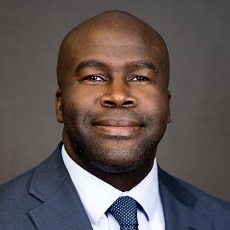Artificial Intelligence Ensures Payer, Provider Pay Covers Costs
Gateway Health Plan is using artificial intelligence to improve its risk adjustment programs, which ensure the payer and its providers receive reimbursement that covers a patient’s total cost of care.

Source: Thinkstock
- Artificial intelligence (AI) in healthcare is influencing the next generation of radiology tools and helping to expand access to care in underserved or developing areas. The technology is supporting clinical advancements, but a Pennsylvania-based health plan is finding that AI can advance care management by ensuring providers and payers get paid the appropriate rate for treating their sickest patients.
“Artificial intelligence modules help us improve documentation, risk adjustment models, and financial payments, as well as level out the playing field so health plans are getting paid appropriately for the disease burden of their population,” Gateway Health Plan’s Gabriel L. Medley recently told RevCycleIntelligence.com.
Gateway Health is a managed care organization that serves more than 500,000 members across six states. The plan prides itself on delivering personalized care to each member through disease management, health and wellness programs, and preventative care.
Risk adjusted payments are key to ensuring the health plan and its network of 35,000 providers and 300 hospitals receives accurate reimbursement for delivering comprehensive, personalized services.
“What's happened in the last decade or so is risk adjustment was integrated to capture the disease burden of the population,” Medley, the VP of Quality Improvement and Risk Adjustment Programs stated. “Members can live in different areas and geographical landscapes, but the larger the membership, the greater the spread of the risk pool from an insurance perspective.”
READ MORE: Exploring the Fundamentals of Medical Billing and Coding
“However, if you don't know the disease burden of the population, you could be incurring costs above what the base model presents,” he added.
While health plans are the recipient of risk-adjusted payments from Medicare and Medicaid, those payments trickle down to the provider level through better rates, Medley explained. Gateway Health can offer their providers reimbursement rates that cover a greater portion of the total costs of care because the plan is getting the right capitated payment from its public payer sponsor.

With risk adjustment now a critical component to health plan and provider payment determinations, accurate and complete clinical documentation is a top priority for health plans and providers alike.
Providers need to make sure documentation and coding accurately capture a patient’s conditions, and health plans must ensure the documents they receive from providers do not miss a condition or disease that would require spending above the payment rate.
“If a provider group is under-reporting diagnosis codes, that would mispresent the disease burden of the population and the health plan would get a lower risk adjustment,” he said. “If the health plan is getting a lower risk adjustment, this means you're not getting paid at the level that would cover the medical costs.”
READ MORE: Maximizing Provider Revenue with Payer Contract Management
Health plans are capturing the disease burden of their member populations primarily through diagnosis codes from encounter claims generated by their providers and hospitals. But the remaining 40 percent of information is found through chart coding and reviewing supplemental documents.
Chart coding and reviews are a major challenge for busy health plans. Not only do health plans need to employ expert coders, but those coders need to sift through thousands of charts to ensure providers did not miss a code.
“We have chart collection for unconfirmed diagnosis codes which tells us we have all these claims coming through, but we're still seeing information that may not be in the encounter claim that may still be sitting in the provider's EMR,” Medley explained. “In that case, we would go back to the provider and ask them to give us the chart for that member.”
“Then, a certified professional coder or certified risk adjustment coder would code that information and it would be converted into a supplemental encounter record. We then submit it to the government, state or federal,” he continued.
For some plans, like Medicaid arrangements, the process is even trickier because the payer does not accept encounter claims. Health payers must submit a new claim to Medicaid to correct the disease burden.
READ MORE: After EHR Adoption, Revenue Cycle Technology Modernization Begins
“At the end of the day, a health plan is still extracting information from the EMR in some form,” he stressed. “Everything's coming from the EMR and then turned into an encounter record and submitted.”
The complex process of ensuring the disease burden and other characteristics are accurately captured for accurate reimbursement troubled Gateway Health. Going into provider medical records, manually reviewing charts, and hiring expert coders to complete claims was complex and did not guarantee the health plan could paint a complete picture of their member population.
The managed care organization turned to an automated solution from Apixio that used artificial intelligence technology to streamline risk adjustment and ensure the plan and its providers received payment rates they deserved for treating an entire population.
Artificial intelligence captures what the human eye misses
Artificial intelligence technology helped Gateway Health go through patient charts and supplemental documentation four to five times faster, Medley reported.
“AI tools have a systemic approach that actually help the health plan go through all those records in an unprecedented timeframe and with a high-level of accuracy to tell you what's in the record or what our first pass chart review was missing,” he said.
The artificial intelligence tool became a valuable second set of eyes for the health plan.
“We have a better understanding of our members because the AI tool actually picked up information that the human eye was missing,” he stated. “It was like a second view.”
For example, the artificial intelligence tool was able to identify a significant number of conditions with hundreds of codes missing from Gateway Health’s submissions to public payers.
“We were able to submit those codes and receive a significant return off of that,” he elaborated. “We also found codes that showed the condition didn’t exist and we had to generate a file to delete the condition to ensure the members morbidity was accurately reported to the government.”
Overall, the support of artificial intelligence increased productivity and efficiency for the risk adjustment program at Gateway Health. And the automated solution fostered the improvements without having to send charts to an outsourced vendor who would charge a nominal fee per chart.
“It costs millions of dollars to do it,” Medley stated. “We took those same exact charts and sent them through an AI tool.”
Gateway Health anticipates downstream healthcare savings from using the insights to better allocate population health resources and funds.
“The return is important, but also we were able to capture those diagnosis codes to more accurately reflect our populations. That information is then used for population health and other programs,” Medley explained. “We use the information to determine who population health management staff go after and what information is loaded to software tools or engines, then pushed to providers.”
Armed with a more complete view of their member population, the health plan can serve as a true partner with providers to improve population health and patient outcomes. For example, the artificial intelligence tool may identify a rising-risk diabetic missed by a provider and his coder. Or the tool could flag an individual as obese when a risk adjustment vendor missed the condition.
Gateway Health can share their insights on member health with providers to flag potentially avoidable and expensive healthcare events.
“Now the provider can actually use that information when that member comes in on their own or use it to reach out to the member to say, ‘Hey look, we think you should come in, so we can run an assessment to make sure everything is going okay with your health.’ The assessment and appropriate intervention by the provider may prevent the member from having a catastrophic situation that would increase costs for the health plan,” he stated.
Improving preventative and population health through artificial intelligence improves the bottom line for providers, Medley added.
“The health plan provides analytics and data that help the provider groups support population health and effectively treat those high-cost members. Then, there's a revenue cycle of savings,” he said. “A portion of the shared savings is then passed to the provider group or health system and the health plan also receives a share.”
Health plans and providers should be leveraging the latest innovations in health IT to increase efficiencies and decrease spending. Artificial intelligence offers both parties not only a tool for improving clinical care, but enhancing the administrative aspect of healthcare to create a better overall experience for patients, providers, and payers.
“Reducing costs via AI will make us more efficient and able to provide better information without having to do manual collections where we have to go to provider offices. It's extremely painful for provider offices because all the health plans are asking for this information and because they have to answer whether the provider is providing quality care to the members,” he stated.
“Artificial intelligence is going be a very powerful agent, saving time and money across echelons of care.”
